THE ADIBOU METHOD
For Reception and Key Stage 1 (UK) and Pre-K to Grade 1 (USA)
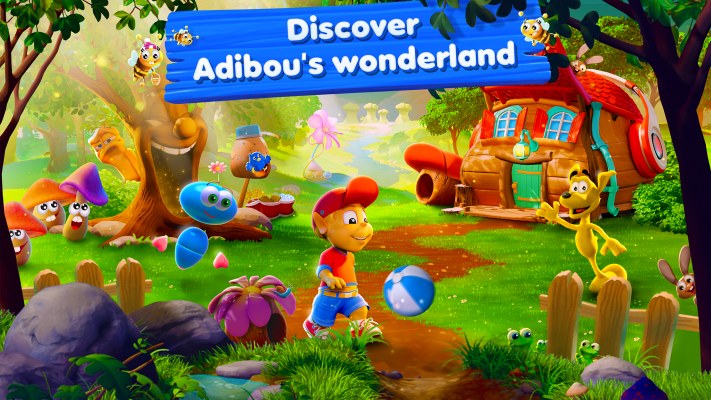
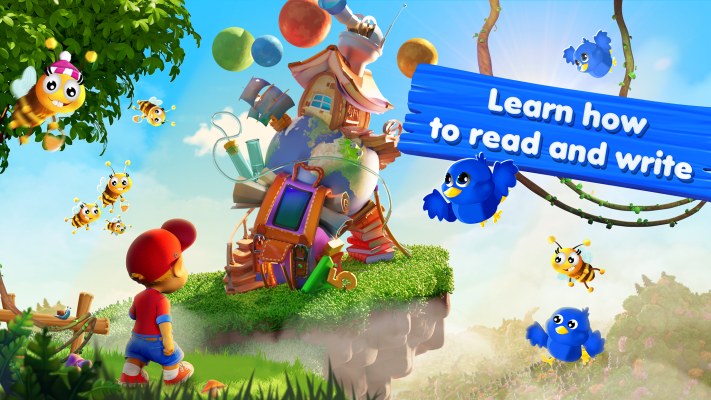
1. Our educational approach
Adibou by Wiloki is an educational game for children aged 4 to 7 *. Adibou help them become more aware of their surroundings and gives them a taste for learning.
*Reception class up to Year 2 in the UK or Pre-K up to Grade 1 in the US.
Adibou takes kids on a journey through a lively, fun and colourful world that evolves according to their actions. With the help of Adibou and his friends, they will take care of animals and tend to crops and harvests. They can listen to immersive podcasts, create innovative recipes in the kitchen and develop their creativity in the flower garden. Each activity is aimed at developing specific skills, such as creativity, concentration, organisation and motor skills. In the Tower of Knowledge, an area dedicated to learning, children from Reception class to Key Stage 1 (equivalent to Pre-K to 1st Grade in the US) can learn to read and count by engaging with more than 1,500 activities.
Using unique adaptive algorithms, this educational game is ideal for the development of young children aged 4 to 7 as it offers a perfect, tailored learning solution based on the national curriculum. These algorithms enable to identify the strengths and areas for improvement of Reception year or Key Stage 1 (or Pre-K, Kindergarten and 1st Grade in the US) children and the motivational levers. This unique technology goes together with a very fine breakdown of the skills to be assimilated. This allows us to build a personalised learning path, adapted to each child’s pace.
All the content was designed by the Wiloki team, including teachers and experts in digital education.
The world of Adibou is based on learning through play. The child is guided by the game characters and explores the world autonomously. Adibou also encourages the child and rewards initiative.
Moreover, the child is autonomous in his learning. They can also follow their progress in the game and their gains in points and stars by visiting the magic tree. For each early-learning or educational activity in the Tower of Knowledge, the child learns to learn and develops his or her exploratory and deductive skills.
Finally, we are convinced of the importance of active engagement. A passive learner does not learn! Engagement activates itself when the learner takes pleasure in the learning activity. The world of Adibou, from early learning activities to school learning activities, has been designed on this basis.
The Tower of Knowledge is a place dedicated to learning English and Mathematics.
In the Mathematics and English rooms, each object leads to a skill to be developed by the child. This skill is then further divided into concepts: these are the basic skills to be acquired by the child. The amusing animations of the objects encourage the child to discover what is hidden in each of them.
The educational content was developed by digital education experts and teachers.
Design of educational activities
For each concept, several types of activities are offered to ensure a diversified learning and to tackling the concept with different approach. For each level of difficulty of a concept, the framework of the activity, the interactivity and the method proposed are unique.
All activities were designed in close collaboration with teachers, digital education experts and ergonomists.
How contents adapt to children?
All content and exercises adapt to the age range of the children and to their knowledge. As soon as children enter the Tower of Knowledge, the educational activity area, he or she can choose between three levels of difficulty.
Thanks to our technology, the application first validates the knowledge before moving the player on to the next level. If they have any difficulties, the application will offer some easier contents to the children in order not to discourage them. Our objective is to foster the children’s taste for learning and thus engage them to learn. This is why Adibou systematically tones down wrong answers and congratulates the child for each success.
If the children progress and overcome the three levels of difficulty of their class, an activity of a higher difficulty will be provided.
A concept is considered to have been acquired when the child has successfully passed level-3. Children earn a star as a symbol of their achievement. Collecting stars strengthens children’s self-confidence.
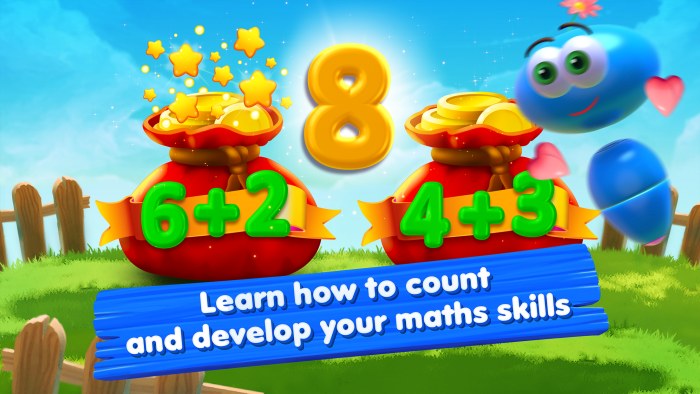
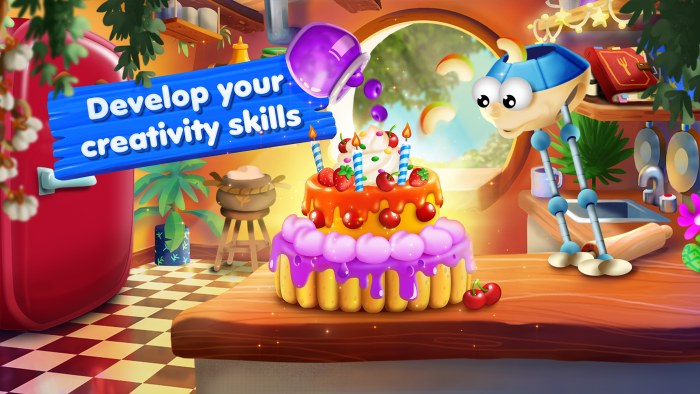
2. Skills and learnings –
Reception to Year 2 (UK) and Pre-K to 1st Grade (US)
Learning objectives by age range
4 – 5 year old (Reception class or Pre-K)
| OBJECTS | COMPETENCE | NOTION | METHOD |
|---|---|---|---|
| Toy chest | Vocabulary | Living and non-living | Listening, classification, visual perception |
| Toy chest | Vocabulary | Everyday objects | Listening, classification, visual perception |
| Snow ball | Comprehension | Understanding a description | Comprehension, observation, visual perception, comparison |
| Snow ball | Comprehension | Opposites | Comprehension, observation, visual perception, comparison |
| Speaker | Phonics and syllables | Recognising and locating a sound in a word | Phonic recognition, language, listening, reasoning, associating a word with a picture |
| Speaker | Phonics and syllables | Associating 2 rhyming words | Phonic recognition, language, listening, reasoning, associating a word with a picture |
| Speaker | Phonics and syllables | Differenciating sounds | Phonic recognition, language, listening, reasoning, associating a word with a picture | Speaker | Phonics and syllables | Counting the number of syllables | Phonic recognition, language, listening, reasoning, associating a word with a picture |
| Television | Matching pictures | Matching pictures | Observation, reasoning, comparison, classification |
| Television | Matching pictures | Sorting and matching pictures | Observation, reasoning, comparison, classification |
| Cubes with letters | Letters | Recognising letters | Observation, memorization, reading, repetition |
| Skateboard | Words | Identifying a letter in a word | Observation, reasoning, rearranging letters, completing a word according to suggestions, reading |
| Skateboard | Words | First letter of a word | Observation, reasoning, rearranging letters, completing a word according to suggestions, reading |
| Skateboard | Words | Plurals | Observation, reasoning, rearranging letters, completing a word according to suggestions, reading |
| Train | Nature of texts | Nature of texts | Associating objects and ideas, understanding |
| Xylophone | grapheme-phoneme correspondence | s, a, t, p, i, n sounds | Visual and sound recognition, reconstruction of words with missing sounds |
| Xylophone | grapheme-phoneme correspondence | m, d, g, o, c, k sounds | Visual and sound recognition, reconstruction of words with missing sounds |
| Xylophone | grapheme-phoneme correspondence | e, u, r, h, b sounds | Visual and sound recognition, reconstruction of words with missing sounds |
| Xylophone | grapheme-phoneme correspondence | f, ff, l, ll, ss, ck sounds | Visual and sound recognition, reconstruction of words with missing sounds |
| OBJECTS | COMPETENCE | NOTION | METHOD |
|---|---|---|---|
| Hourglass | Quantities | Comparing quantities | Understanding of the concepts of “empty”, “full”, “most” and “least |
| Bag | Counting | Up to 10 | Observation, counting, counting in groups of 5, analysis, reorganisation of numbers |
| Bag | Counting | Up to 20 | Observation, counting, counting in groups of 5, analysis, reorganisation of numbers |
| Hourglass | Numbers up to 100 | Comparing numbers | Counting, understanding signs >, <, = |
| Machine | Classifying | Finding similiarities and the odd one out | Comparison and reproduction of images, identification of intruders |
| Machine | Classifying | Sorting and grouping | Bigger, smaller or equal |
| Telephone | Patterns | Recognising patterns | Logical sequencing of colours, shapes and numbers, observation | Board | Grids and tables | Tables | Reproducing a model, understanding an instruction, logic, comparison |
| Microscope | Lengths and weights | Comparing lengths | Observation, understanding of ‘short’, ‘long’, ‘same length |
| Microscope | Lengths and weights | Comparing weights | Observation, differentiating heavy and light, understand the mechanism of a scale |
| Watch | Reading the time | Reading the time | Role of the hands, position of the hands and meanings |
| Rollerblades | Finding paths | Following a path | Following a path, logic and analysis |
| Rollers | Finding paths | Draw path | Building a path in accordance with the existing path |
| Shelf | Shapes | 2D shapes | Recognising the square, triangle and circle |
| Shelf | Shapes | 3D shapes | Recognising cubes, cuboids, spheres and pyramids. |
| Cube | Position and direction | Under, on, above, below | Observation, understanding instructions, problem solving |
| Cube | Position and direction | Far, near | Comparing lengths according to a reference point |
| Cube | Position and direction | Inside, outside | Observation, understanding of an instruction |
| Cube | Position and direction | “left” and right | Differentiate between right and “left” from the child’s or a character’s point of view |
| Glasses | Calculation | Adding | Counting, observation, reasoning |
| Glasses | Calculation | Addition up to 10 without carrying over | Calculation, addition in a row of numbers |
| Glasses | Calculation | Taking away | Counting, observation, reasoning |
| Glasses | Calculation | Subtraction | Numeracy, line subtraction, reasoning |
| Glasses | Calculation | Doubling and halving | Counting, pairing a die with a number, distinguishing between doubles and halves. |
5 – 6 year old (Year 1 or Kindergarten)
| OBJECTS | COMPETENCE | NOTION | METHOD |
|---|---|---|---|
| Toy chest | Vocabulary | Living and non-living | Listening, classification, visual perception |
| Toy chest | Vocabulary | Everyday objects | Listening, classification, visual perception |
| Snow ball | Comprehension | Understanding a description | Comprehension, observation, visual perception, comparison |
| Snow ball | Comprehension | Opposites | Comprehension, observation, visual perception, comparison |
| Speaker | Phonics and syllables | Recognising and locating a sound in a word | Phonic recognition, language, listening, reasoning, associating a word with a picture |
| Speaker | Phonics and syllables | Associating 2 rhyming words | Phonic recognition, language, listening, reasoning, associating a word with a picture |
| Speaker | Phonics and syllables | Differenciating sounds | Phonic recognition, language, listening, reasoning, associating a word with a picture | Speaker | Phonics and syllables | Counting the number of syllables | Phonic recognition, language, listening, reasoning, associating a word with a picture |
| Speaker | Phonics and syllables | Recognising and locating a syllable in a word | Phonic recognition, language, listening, reasoning, associating a word with a picture |
| Television | Matching pictures | Matching pictures | Observation, reasoning, comparison, classification |
| Television | Matching pictures | Sorting and matching pictures | Observation, reasoning, comparison, classification |
| Television | Matching pictures | Matching pictures to a text | Observation, reasoning, comparison, classification |
| Cubes with letters | Letters | Recognising letters | Observation, memorization, reading, repetition |
| Cubes with letters | Letters | Uppercase and lowercase letters | Observation, memorization, reading, repetition |
| Skateboard | Words | Identifying a letter in a word | Observation, reasoning, rearranging letters, completing a word according to suggestions, reading |
| Skateboard | Words | First letter of a word | Observation, reasoning, rearranging letters, completing a word according to suggestions, reading |
| Skateboard | Words | Plurals | Observation, reasoning, rearranging letters, completing a word according to suggestions, reading |
| Skateboard | Words | Word patterns | Observation, reasoning, rearranging letters, completing a word according to suggestions, reading |
| Train | Nature of texts | Nature of texts | Associating objects and ideas, understanding |
| Xylophone | grapheme-phoneme correspondence | s, a, t, p, i, n sounds | Visual and sound recognition, reconstruction of words with missing sounds |
| Xylophone | grapheme-phoneme correspondence | m, d, g, o, c, k sounds | Visual and sound recognition, reconstruction of words with missing sounds |
| Xylophone | grapheme-phoneme correspondence | e, u, r, h, b sounds | Visual and sound recognition, reconstruction of words with missing sounds |
| Xylophone | grapheme-phoneme correspondence | f, ff, l, ll, ss, ck sounds | Visual and sound recognition, reconstruction of words with missing sounds |
| Xylophone | grapheme-phoneme correspondence | j, v, w, x sounds | Visual and sound recognition, reconstruction of words with missing sounds |
| Xylophone | grapheme-phoneme correspondence | y, z, zz, qu, zh sounds | Visual and sound recognition, reconstruction of words with missing sounds |
| Xylophone | grapheme-phoneme correspondence | ng, sh, ch, th, nk sounds | Visual and sound recognition, reconstruction of words with missing sounds |
| OBJECTS | COMPETENCE | NOTION | METHOD |
|---|---|---|---|
| Hourglass | Quantities | Comparing quantities | Understanding of the concepts of “empty”, “full”, “most” and “least |
| Bag | Counting | Up to 10 | Observation, counting, counting in groups of 5, analysis, reorganisation of numbers |
| Bag | Counting | Up to 20 | Observation, counting, counting in groups of 5, analysis, reorganisation of numbers |
| Bag | Counting | Up to 100 | Observation, counting, counting in groups of 5, analysis, reorganisation of numbers |
| Hourglass | Numbers up to 100 | Comparing numbers | Counting, understanding signs >, <, = |
| Hourglass | Numbers up to 100 | Place value | Counting, differentiating units and tens |
| Machine | Classifying | Finding similiarities and the odd one out | Comparison and reproduction of images, identification of intruders | Machine | Classifying | Sorting and grouping | Bigger, smaller or equal |
| Telephone | Patterns | Recognising patterns | Logical sequencing of colours, shapes and numbers, observation |
| Board | Grids and tables | Placing objects in a grid | Reproducing a model, understanding an instruction, logic, comparison |
| Board | Grids and tables | Tables | Reproducing a model, understanding an instruction, logic, comparison |
| Microscope | Lengths and weights | Comparing lengths | Observation, understanding of ‘short’, ‘long’, ‘same length |
| Microscope | Lengths and weights | Comparing weights | Observation, differentiating heavy and light, understand the mechanism of a scale |
| Watch | Reading the time | Reading the time | Role of the hands, position of the hands and meanings |
| Rollerblades | Finding paths | Following a path | Following a path, logic and analysis |
| Rollers | Finding paths | Draw path | Building a path in accordance with the existing path |
| Shelf | Shapes | 2D shapes | Recognising the square, triangle and circle |
| Shelf | Shapes | 3D shapes | Recognising cubes, cuboids, spheres and pyramids. |
| Cube | Position and direction | Under, on, above, below | Observation, understanding instructions, problem solving |
| Cube | Position and direction | Far, near | Comparing lengths according to a reference point |
| Cube | Position and direction | Inside, outside | Observation, understanding of an instruction |
| Cube | Position and direction | “left” and right | Differentiate between right and “left” from the child’s or a character’s point of view |
| Cube | Position and direction | First, last | Understanding of organisation in an ordered structure. |
| Glasses | Calculation | Adding | Counting, observation, reasoning |
| Glasses | Calculation | Addition up to 10 without carrying over | Calculation, addition in a row of numbers |
| Glasses | Calculation | Addition with carrying over | Numeracy, adding numbers or digits in a row |
| Glasses | Calculation | Taking away | Counting, observation, reasoning |
| Glasses | Calculation | Subtraction | Numeracy, line subtraction, reasoning |
| Glasses | Calculation | Doubling and halving | Counting, pairing a die with a number, distinguishing between doubles and halves. |
| Purse | Money | Money | Distinguishing coins and notes, counting, associating a group of coins and notes with an amount |
6 – 7 year old (Year 2 or Grade 1)
| OBJECTS | COMPETENCE | NOTION | METHOD |
|---|---|---|---|
| COMPETENCE | NOTION | ||
| Toy chest | Vocabulary | Living and non-living | Listening, classification, visual perception |
| Toy chest | Vocabulary | Everyday objects | Listening, classification, visual perception |
| Snow ball | Comprehension | Understanding a description | Comprehension, observation, visual perception, comparison |
| Speaker | Phonics and syllables | Recognising and locating a sound in a word | Phonic recognition, language, listening, reasoning, associating a word with a picture |
| Speaker | Phonics and syllables | Associating 2 rhyming words | Phonic recognition, language, listening, reasoning, associating a word with a picture |
| Speaker | Phonics and syllables | Differenciating sounds | Phonic recognition, language, listening, reasoning, associating a word with a picture | Speaker | Phonics and syllables | Counting the number of syllables | Phonic recognition, language, listening, reasoning, associating a word with a picture |
| Speaker | Phonics and syllables | Recognising and locating a syllable in a word | Phonic recognition, language, listening, reasoning, associating a word with a picture |
| Television | Matching pictures | Matching pictures | Observation, reasoning, comparison, classification |
| Television | Matching pictures | Sorting and matching pictures | Observation, reasoning, comparison, classification |
| Television | Matching pictures | Matching pictures to a text | Observation, reasoning, comparison, classification |
| Cubes with letters | Letters | Uppercase and lowercase letters | Observation, memorization, reading, repetition |
| Skateboard | Words | Plurals | Observation, reasoning, rearranging letters, completing a word according to suggestions, reading |
| Skateboard | Words | Word patterns | Observation, reasoning, rearranging letters, completing a word according to suggestions, reading |
| Train | Nature of texts | Nature of texts | Associating objects and ideas, understanding |
| Xylophone | grapheme-phoneme correspondence | s, a, t, p, i, n sounds | Visual and sound recognition, reconstruction of words with missing sounds |
| Xylophone | grapheme-phoneme correspondence | m, d, g, o, c, k sounds | Visual and sound recognition, reconstruction of words with missing sounds |
| Xylophone | grapheme-phoneme correspondence | e, u, r, h, b sounds | Visual and sound recognition, reconstruction of words with missing sounds |
| Xylophone | grapheme-phoneme correspondence | f, ff, l, ll, ss, ck sounds | Visual and sound recognition, reconstruction of words with missing sounds |
| Xylophone | grapheme-phoneme correspondence | y, z, zz, qu, zh sounds | Visual and sound recognition, reconstruction of words with missing sounds |
| Xylophone | grapheme-phoneme correspondence | ng, sh, ch, th, nk sounds | Visual and sound recognition, reconstruction of words with missing sounds |
| Xylophone | grapheme-phoneme correspondence | ee, ai, igh, oa, oo sounds | Visual and sound recognition, reconstruction of words with missing sounds |
| Xylophone | grapheme-phoneme correspondence | ar, ir, or, ur, er, ure sounds | Visual and sound recognition, reconstruction of words with missing sounds |
| OBJECTS | COMPETENCE | NOTION | METHOD |
|---|---|---|---|
| Bag | Counting | Up to 20 | Observation, counting, counting in groups of 5, analysis, reorganisation of numbers |
| Bag | Counting | Up to 100 | Observation, counting, counting in groups of 5, analysis, reorganisation of numbers |
| Hourglass | Numbers up to 100 | Comparing numbers | Counting, understanding signs >, <, = |
| Hourglass | Numbers up to 100 | Place value | Counting, differentiating units and tens |
| Machine | Classifying | Finding similiarities and the odd one out | Comparison and reproduction of images, identification of intruders |
| Board | Grids and tables | Placing objects in a grid | Reproducing a model, understanding an instruction, logic, comparison |
| Board | Grids and tables | Tables | Reproducing a model, understanding an instruction, logic, comparison | Microscope | Lengths and weights | Comparing lengths | Observation, understanding of ‘short’, ‘long’, ‘same length |
| Microscope | Lengths and weights | Comparing weights | Observation, differentiating heavy and light, understand the mechanism of a scale |
| Watch | Reading the time | Reading the time | Role of the hands, position of the hands and meanings |
| Rollerblades | Finding paths | Following a path | Following a path, logic and analysis |
| Rollers | Finding paths | Draw path | Building a path in accordance with the existing path |
| Shelf | Shapes | 2D shapes | Recognising the square, triangle and circle |
| Shelf | Shapes | 3D shapes | Recognising cubes, cuboids, spheres and pyramids. |
| Cube | Position and direction | Far, near | Comparing lengths according to a reference point |
| Cube | Position and direction | “left” and right | Differentiate between right and “left” from the child’s or a character’s point of view |
| Cube | Position and direction | First, last | Understanding of organisation in an ordered structure. |
| Glasses | Calculation | Adding | Counting, observation, reasoning |
| Glasses | Calculation | Addition up to 10 without carrying over | Calculation, addition in a row of numbers |
| Glasses | Calculation | Addition with carrying over | Numeracy, adding numbers or digits in a row |
| Glasses | Calculation | Taking away | Counting, observation, reasoning |
| Glasses | Calculation | Subtraction | Numeracy, line subtraction, reasoning |
| Glasses | Calculation | Doubling and halving | Counting, pairing a die with a number, distinguishing between doubles and halves. |
| Purse | Money | Money | Distinguishing coins and notes, counting, associating a group of coins and notes with an amount |
Learning soft-skills
In this vast educational and playful universe, Adibou acts as a kind and fun big brother, helping kids explore his world in full autonomy. The game will captivate kids aged 4 to 7* with its funny and endearing characters, its positive environment and numerous fun activities.
*Reception class up to Year 2 in the UK or Pre-K up to Grade 1 in the US.
Adibou encourages curiosity in young children*. The educational game is full of details and surprises that encourage the child to discover and explore.
*Reception class up to Year 2 in the UK or Pre-K up to Grade 1 in the US.
In addition, the Adibou Living Room Speaker allows children to listen to interactive and immersive podcasts. Tales, but also secrets of stories or mysteries of science are told to the kids as if they were here. These stories, told as immersive adventures, open up the world and give the child a taste for learning. At any time, the child can change the narrator and therefore the point of view of the story: Robin Hood is told by Bingo, the funny narrator, or by the Sheriff of Nottingham.
The development of creativity and imagination is key for the construction of the personality of young children. This is why Adibou is keen to encourage the creativity of young children in all the game’s areas:
- Listen to fun and interactive songs and stories
- Customise Adibou’s garden
- Bake and decorate cakes
- Create your own character
- Customise flowers
The whole game was designed to allow 4 to 7 year-olds* to concentrate on the tasks at hand before moving on to the next step.
*Reception class up to Year 2 in the UK or Pre-K up to Grade 1 in the US.
In addition to calculation and geometry activities, Adibou also allows children to develop their organisation, deduction and logic skills.
For example, young children* can cultivate the vegetable garden and grow fruits and vegetables they need to cook.
*Reception class up to Year 2 in the UK or Pre-K up to Grade 1 in the US.
The activities in Adibou are specially designed to play down mistakes and highlight the progress made by nursery school and Year 2 children.
All successes and progress are rewarded. Points and stars earned in the game allow kids to become aware of what they can do and what they still have to achieve.
Kids explore and learn through the game’s missions.
| Type of missions | Missions |
|---|---|
| Garden Mission | Collect 5 carrots |
| Garden Mission | Harvest 20 ears of wheat |
| Garden Mission | Collect 100 salads |
| Garden Mission | Pick 1,000 strawberries |
| Garden Mission | Pick 1 flower |
| Garden Mission | Pick 100 flowers |
| Garden Mission | Pick 1 magic flower |
| Cooking Mission | Bake 100 cakes |
| Cooking Mission | Bake 5 cake recipes |
| Cooking Mission | Give Pop 20 yummy cakes |
| Cooking Mission | Bake 1,000 cakes |
| Card Game Mission | Win a total of 5 level 1 games against an opponent |
| Card Game Mission | Complete a total of 20 level 2 games with an opponent |
| Card Game Mission | Complete a total of 100 level 3 games with an opponent |
| Brick Breaker Mission | Complete a total of 5 level 1 games |
| Brick Breaker Mission | Complete a total of 20 level 2 games |
| Brick Breaker Mission | Complete a total of 100 level 3 games |
| Wilocast Mission | Listen to 10 Wilocasts |
| Wilocast Mission | Listen to 30 Wilocasts |
| Creation Mission | Create an avatar for little Kiboa |
| Creation Mission | Find the secret mushroom song |
| Creation Mission | Find the firework |
| Management Mission | Put a cap on the beehive, the kennel, the bird feeder and my house |
| Management Mission | Sweep the broom 10 times |
| Management Mission | Customise the house 50 times |
| Exploration Mission | Score 10 baskets |
| Exploration Mission | Watch the ladybirds dance |
| Buddy Mission | Hear me tell 10 jokes |
| Buddy Mission | Win 5 live challenges |
| Buddy Mission | Celebrate one year of friendship with me |
| Points Mission | Earn 10 points |
| Points Mission | Earn 1,000 points |
| Points Mission | Earn 10,000 points |
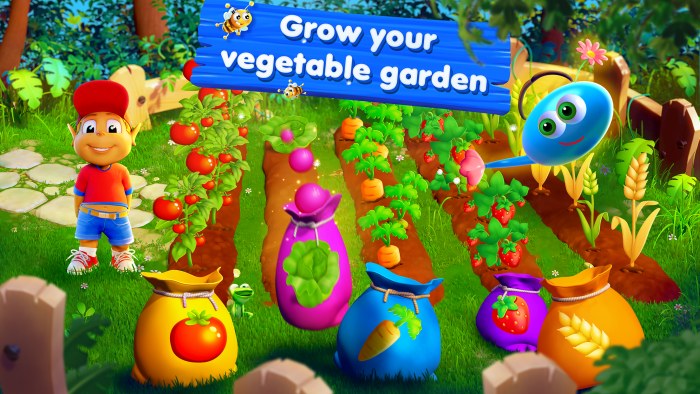
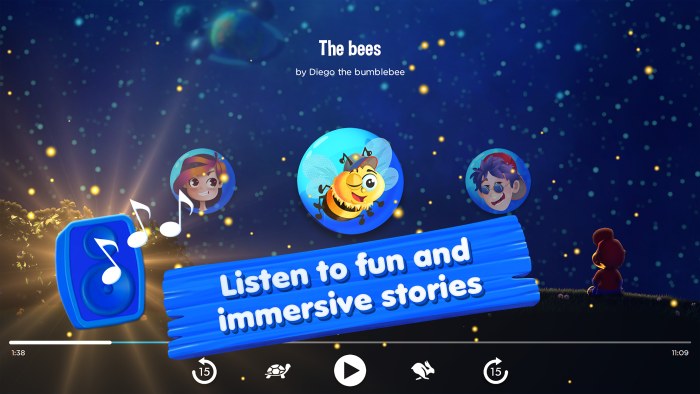
3. Adibou and the parents
Adibou allows parents to follow their child’s progress in an area dedicated to them. To access it, simply go to the menu in the Adibou garden.
The parent follow-up allows parents to follow each of the concepts acquired by their child and the concepts that remain to be acquired.
Indeed, for each concept mastered, the child gets a star as a symbol of success. A concept is considered to have been acquired when the child has passed level-3.
Parents will then have an overview of their child’s level of mastery in each of the skills.
Adibou is an educational game dedicated to the learning of children in Reception year or Key Stage 1 (US Pre-K to Grade 1). Children can therefore play autonomously. Nevertheless, the child will always appreciate playing with his parents.
However, it is recommended to let the child explore, make mistakes and try again to learn by himself.
4. Education and screens
The creation of a safe, non-addictive and physiologically adapted environment for children is essential for Ubisoft and Wiloki.
Wiloki was created on the conviction that a well-balanced and controlled use of digital tools is an outstanding learning lever for children. Regular yet limited screen-time should be preferred. Therefore, the Adibou application will alert children and their parents/guardians when they have spent too much time on the game.
We also recommend that parents monitor the use of the application and screens in general. The application also guarantees a safe experience for all: there are no advertisements, the anonymity is guaranteed and the notification policy is limited.
TM & © Ubisoft Entertainment. All Rights Reserved. | © 2022 Inigo Factory. All Rights Reserved. | Privacy Policy | T&Cs

